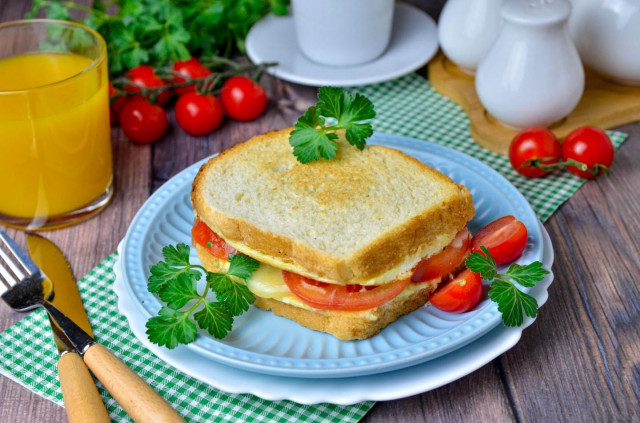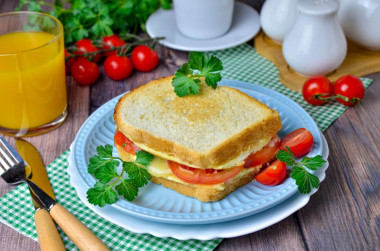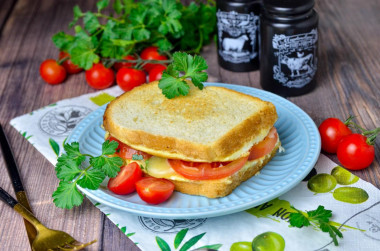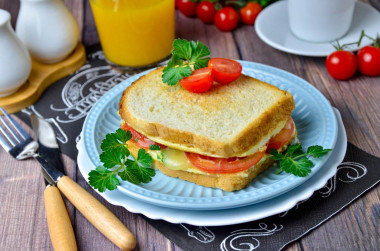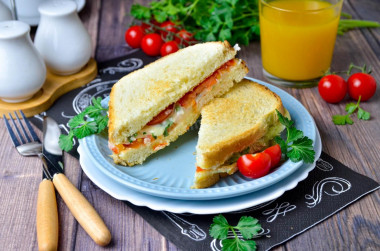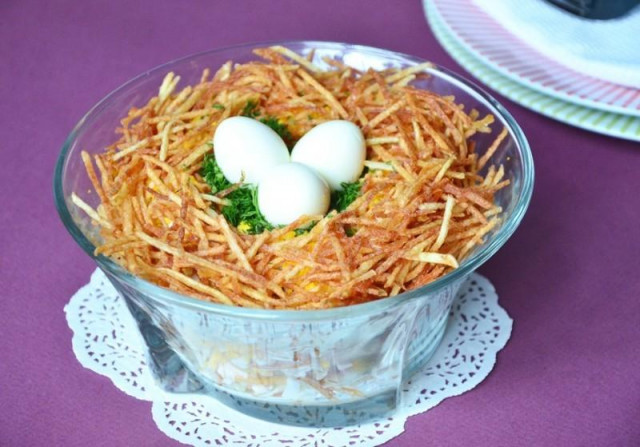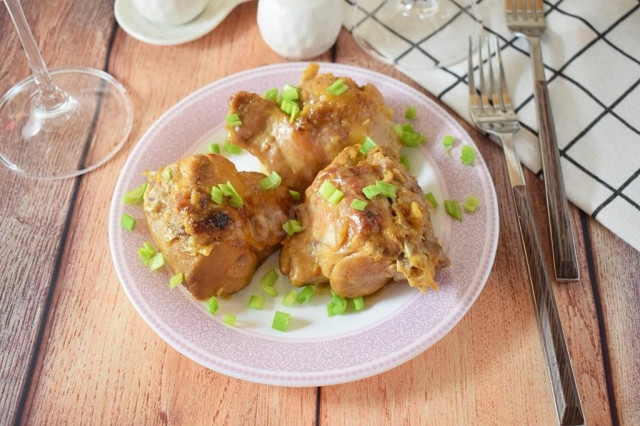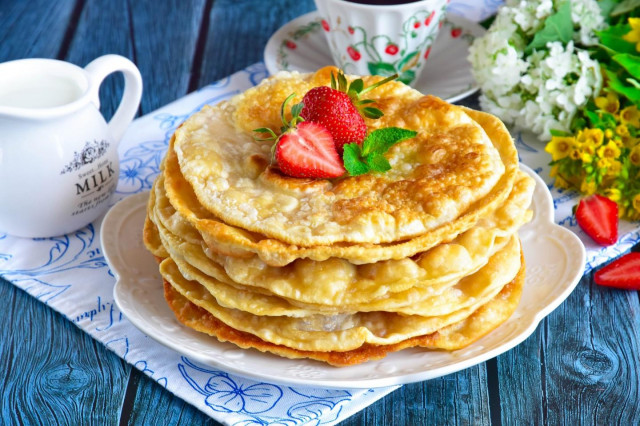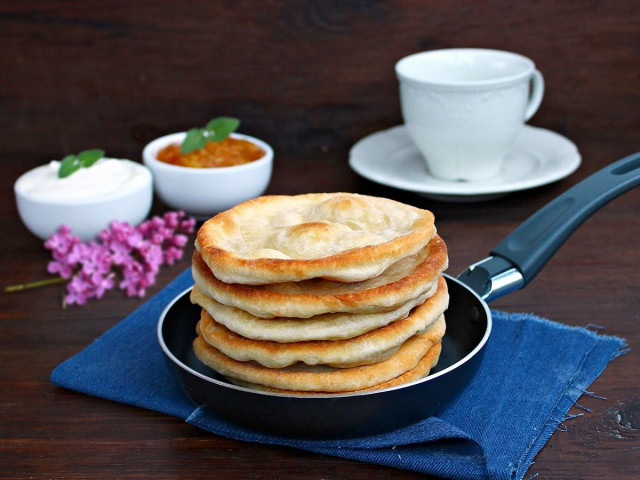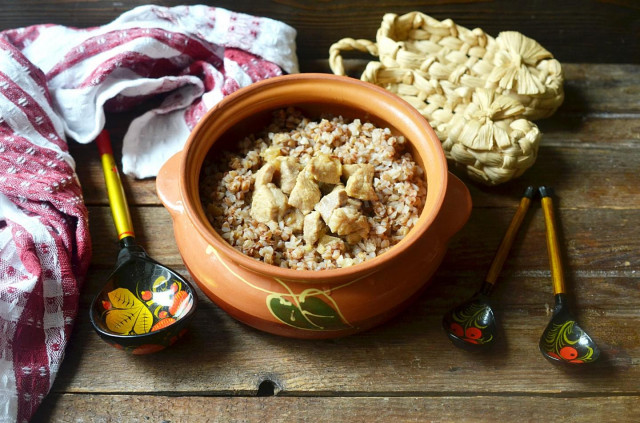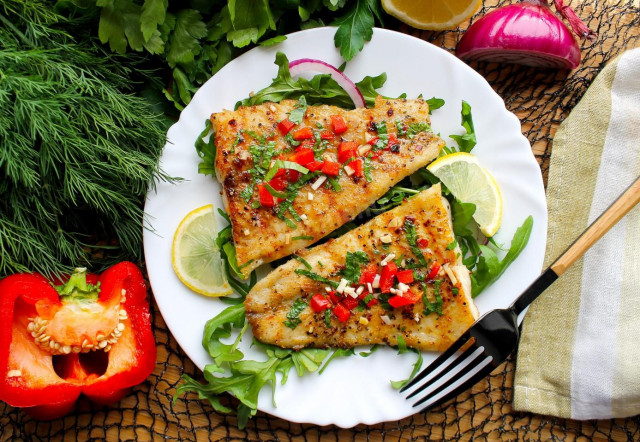Composition / ingredients
Step-by-step cooking
Step 1:
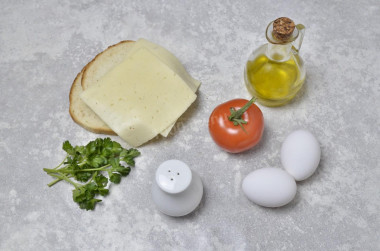
How to make an egg and cheese sandwich in a frying pan? Prepare the products. Any bread will do — white, rye, wholegrain flour. It is better if it is square in shape. I have a regular toast. Any cheese for this dish is suitable — hard, semi-hard, soft, like mozzarella. The main thing is that it is delicious, high-quality, without milk fat substitutes and melts well. Take the greens according to your taste, I have parsley.
Step 2:
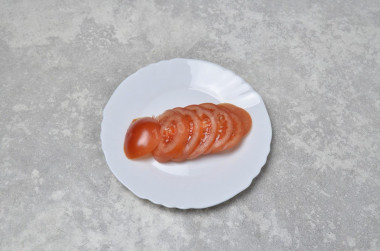
Wash the tomato, dry it and cut it into thin circles. Cherry tomatoes, if you use them, cut in half.
Step 3:
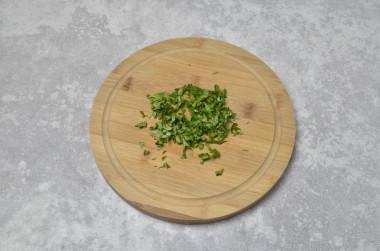
Wash the greens well and dry them so that excess moisture does not spoil the dish. Tear off the leaves and finely chop them with a sharp knife.
Step 4:
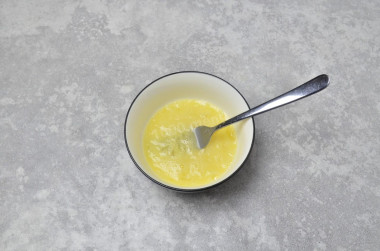
Wash the eggs thoroughly, dry them and drive them into a bowl. Salt them to taste. Beat the eggs well with a fork or whisk until smooth.
Step 5:
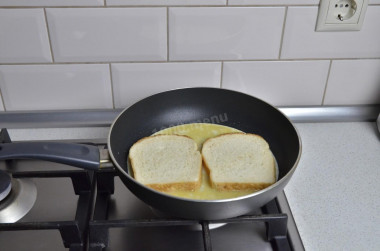
Preheat a frying pan over medium heat. Pour a little vegetable oil on it, warm it up. Pour the eggs into the pan, and put both slices of bread on top.
Step 6:
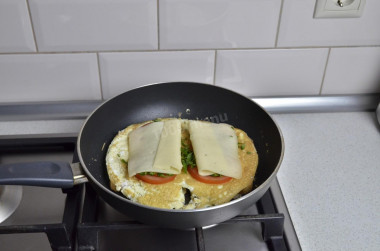
Wait until the egg grabs and browns from the bottom. With a quick, neat movement, turn the pancake over to the other side. It can tear, it's not scary, it won't affect the taste in any way. Put the tomato slices on the bread, sprinkle with herbs. Put pieces of cheese on the tomato. Cover the pan with a lid, turn down the heat and wait for the cheese to melt.
Step 7:
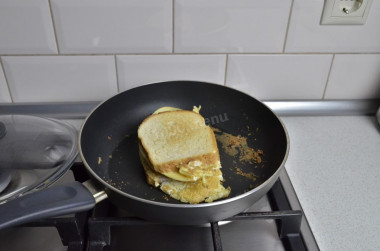
When this happens, fold the sandwich filling inside. The pieces of scrambled eggs that will protrude beyond the edges of the bread, you can either tuck inside the sandwich as well or cut off, as I did.
Step 8:
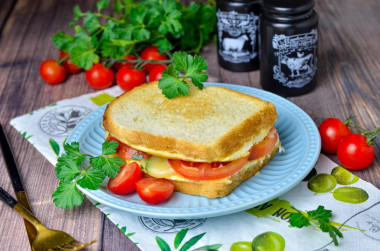
Immediately serve the sandwich to the table, you can cut it diagonally. Bon appetit!
You can also put any sausage products in the filling, this option will turn out even more satisfying.
Be sure to wash the eggs before use, as even the seemingly clean shell may contain harmful bacteria. It is best to use food detergents and a brush.
Choose juicy tomatoes, but dense. Soft fruits do not keep their shape well, in the process of slicing and cooking they will spread into a shapeless mass and spoil the appearance of the dish.
Important! An incorrectly selected frying pan can ruin even the best recipe. All the details on how to choose the perfect frying pan for different dishes read here .
Caloric content of the products possible in the composition of the dish
- Tomatoes - 23 kcal/100g
- Chicken egg - 157 kcal/100g
- Egg white - 45 kcal/100g
- Egg powder - 542 kcal/100g
- Egg yolk - 352 kcal/100g
- Ostrich egg - 118 kcal/100g
- Dutch cheese - 352 kcal/100g
- Swiss cheese - 335 kcal/100g
- Russian cheese - 366 kcal/100g
- Kostroma cheese - 345 kcal/100g
- Yaroslavsky cheese - 361 kcal/100g
- Altai cheese 50% fat content - 356 kcal/100g
- Soviet cheese - 400 kcal/100g
- Cheese "steppe" - 362 kcal/100g
- Uglich cheese - 347 kcal/100g
- Poshekhonsky cheese - 350 kcal/100g
- Lambert cheese - 377 kcal/100g
- Appnzeller cheese with 50% fat content - 400 kcal/100g
- Chester cheese with 50% fat content - 363 kcal/100g
- Edamer cheese with 40% fat content - 340 kcal/100g
- Cheese with mushrooms of 50% fat content - 395 kcal/100g
- Emmental cheese with 45% fat content - 420 kcal/100g
- Gouda cheese with 45% fat content - 356 kcal/100g
- Aiadeus cheese - 364 kcal/100g
- Dom blanc cheese (semi-hard) - 360 kcal/100g
- Cheese "lo spalmino" - 61 kcal/100g
- Cheese "etorki" (sheep, hard) - 401 kcal/100g
- White cheese - 100 kcal/100g
- Fat yellow cheese - 260 kcal/100g
- Altai cheese - 355 kcal/100g
- Kaunas cheese - 355 kcal/100g
- Latvian cheese - 316 kcal/100g
- Limburger cheese - 327 kcal/100g
- Lithuanian cheese - 250 kcal/100g
- Lake cheese - 350 kcal/100g
- Gruyere cheese - 396 kcal/100g
- Vegetable oil - 873 kcal/100g
- Salt - 0 kcal/100g
- Fresh frozen soup greens in a package - 41 kcal/100g
- Greenery - 41 kcal/100g
- White bread - 266 kcal/100g

